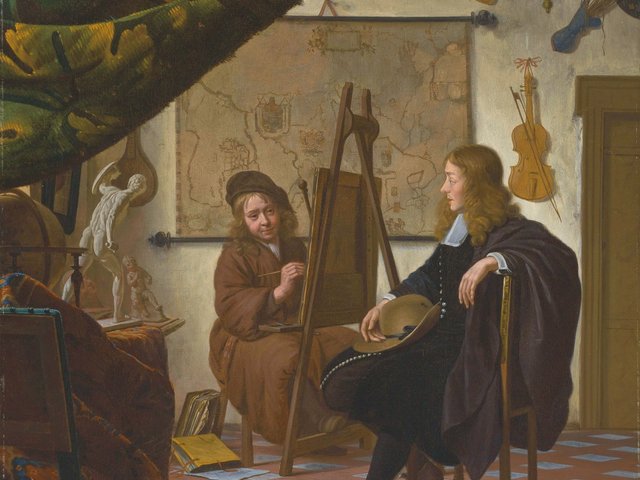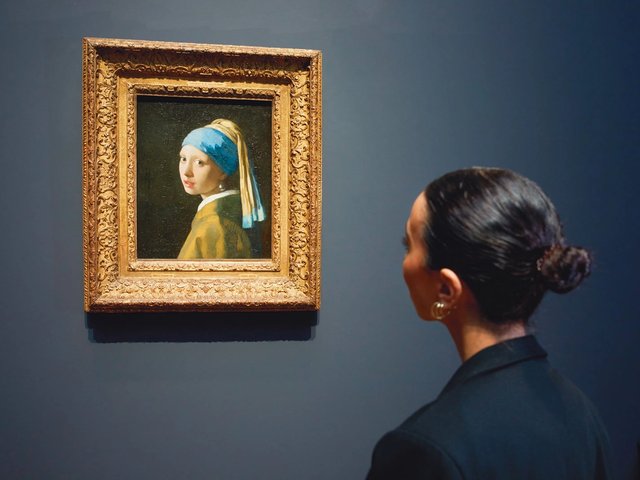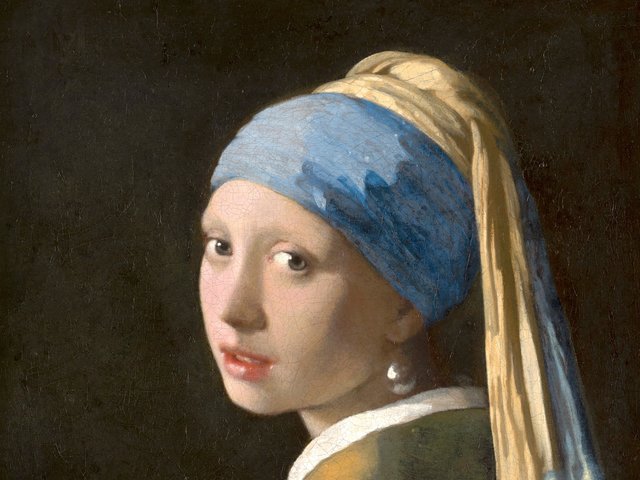The discovery of the original location of Vermeer’s painting The Little Street has thrown a new light on the artist’s development. Frans Grijzenhout, a professor at the University of Amsterdam, has now identified the site as Tripe Gate in Delft. The Rijksmuseum, which owns the painting, accepts Grijzenhout’s findings—and has just put it on show in a small exhibition.
The Little Street can be regarded as “the earliest ‘portrait’ of the exterior of an ordinary house in northern European art”, according to Grijzenhout. It represents yet another indication of Johannes Vermeer’s innovation.
For nearly a century, scholars have debated whether The Little Street depicts a real pair of buildings or if it was conjured up in Vermeer’s imagination. The most widely accepted theory was that it represented a view from the inn owned by Vermeer, the Mechelen. His back windows overlooked almshouses in Voldersgracht, although the scene would not have been quite as in the painting so the artist must have produced his own interpretation. The almshouses were demolished in 1661 and a 20th century building now houses the Vermeer Centrum, which presents reproductions of the artist’s work.
Grijzenhout identified the true site by studying the 1667 “Ledger on the Dredging of the Canals in the Town of Delft”, which is in the municipal archive. It meticulously records how much tax each householder on the canals was obliged to pay, depending on the width of their buildings. The ledger reveals that there was only one place in the entire town where two alleyways lay next to each other, at what is now 40 and 42 Vlamingstraat. Further investigations confirmed that this must be the scene depicted in The Little Street, a conclusion now also accepted by Arthur Wheelock, a Vermeer specialist at the National Gallery of Art in Washington, D.C.
The pair of 16th-century houses in Vlamingstraat were demolished and rebuilt in the late 19th century, although the right-hand passageway still survives. Now used by the owner to store his bicycle and canoe, it leads to a small back garden. Vermeer’s painting gives no indication that the houses fronted onto a canal, but he cropped out the water at the lower edge of the painting, possibly feeling that it would distract from his composition.
The pair of houses lie only three minutes’ walk away from the Mechelen inn. What is now 42 Vlamingstraat, the main house in the painting, was then owned by Vermeer’s widowed aunt, Ariaentgen Claes van der Minne, who supported her five children by selling tripe. Her alleyway was known as Penspoort (Tripe Gate), presumably because of the strong smell which must have emanated from her butchery at the back. Astonishingly, this name appears in a property document of 1877, more than two centuries after her death.
In Vermeer’s painting an elderly woman sews in the open doorway, a younger one works in the alley and a boy and girl play beneath a bench in the street. It is tempting to think that these people represent members of Vermeer’s extended family.
Vermeer’s view is taken from the other side of the canal. His older sister Geertrijt lived almost opposite Ariaentgen, although not directly across. Grijzenhout argues that Vermeer would not have painted outdoors, but instead would have made a detailed drawing from just outside the building straight opposite 40-42 Vlamingstraat. If he painted from such a working drawing, it is extraordinary how he has depicted the details of the architecture, particularly the brickwork.
Until this week’s announcement, the Rijksmuseum dated The Little Street to around 1658, but Grijzenhout now believes it was done in 1660-5. Establishing the chronology of Vermeer’s 36 paintings is difficult, so it will be interesting to see whether other scholars agree on the later dating, to a period when he was producing his famed interiors.
Scholars have long debated whether Vermeer’s paintings of interiors accurately reflect his own rooms in the Mechelen. Locating the site of The Little Street does not solve this puzzle, but it does make it more likely that elements of his rooms are depicted realistically.
After the current exhibition at Amsterdam’s Rijksmuseum (until 13 March 2016), The Little Street will return to Delft for the first time since it left, possibly in 1696. It will be exhibited at Delft’s Museum Prinsenhof (25 March-17 July 2016).




